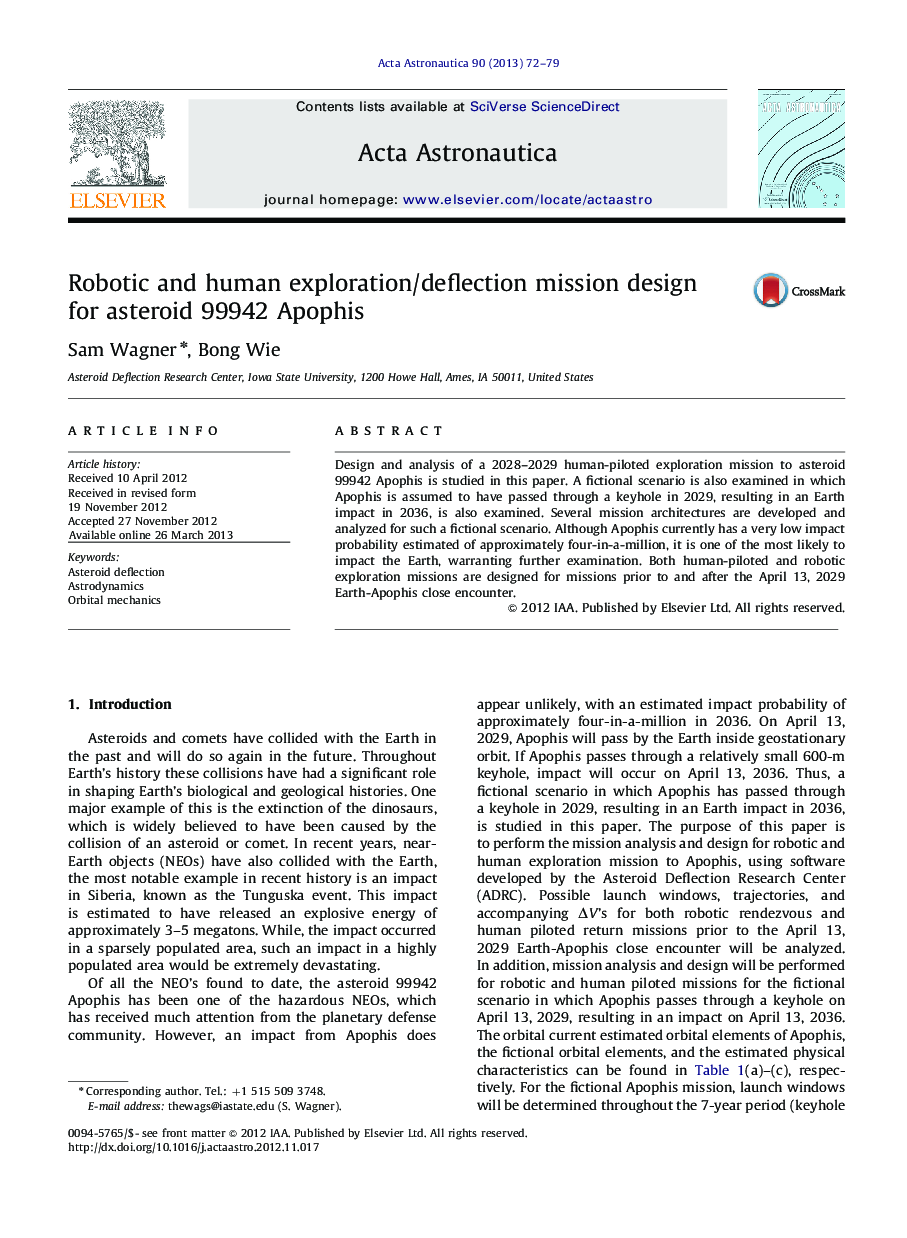| Article ID | Journal | Published Year | Pages | File Type |
|---|---|---|---|---|
| 1714969 | Acta Astronautica | 2013 | 8 Pages |
Design and analysis of a 2028–2029 human-piloted exploration mission to asteroid 99942 Apophis is studied in this paper. A fictional scenario is also examined in which Apophis is assumed to have passed through a keyhole in 2029, resulting in an Earth impact in 2036, is also examined. Several mission architectures are developed and analyzed for such a fictional scenario. Although Apophis currently has a very low impact probability estimated of approximately four-in-a-million, it is one of the most likely to impact the Earth, warranting further examination. Both human-piloted and robotic exploration missions are designed for missions prior to and after the April 13, 2029 Earth-Apophis close encounter.
► Mission analysis and design for Apophis robotic missions. ► Mission analysis and design for and human-piloted missions. ► Post 2029 fictitious mission analysis assuming 2029 keyhole passage and 2036 impact. ► “Last Minute” deflection mission options within 1 year of impact.
